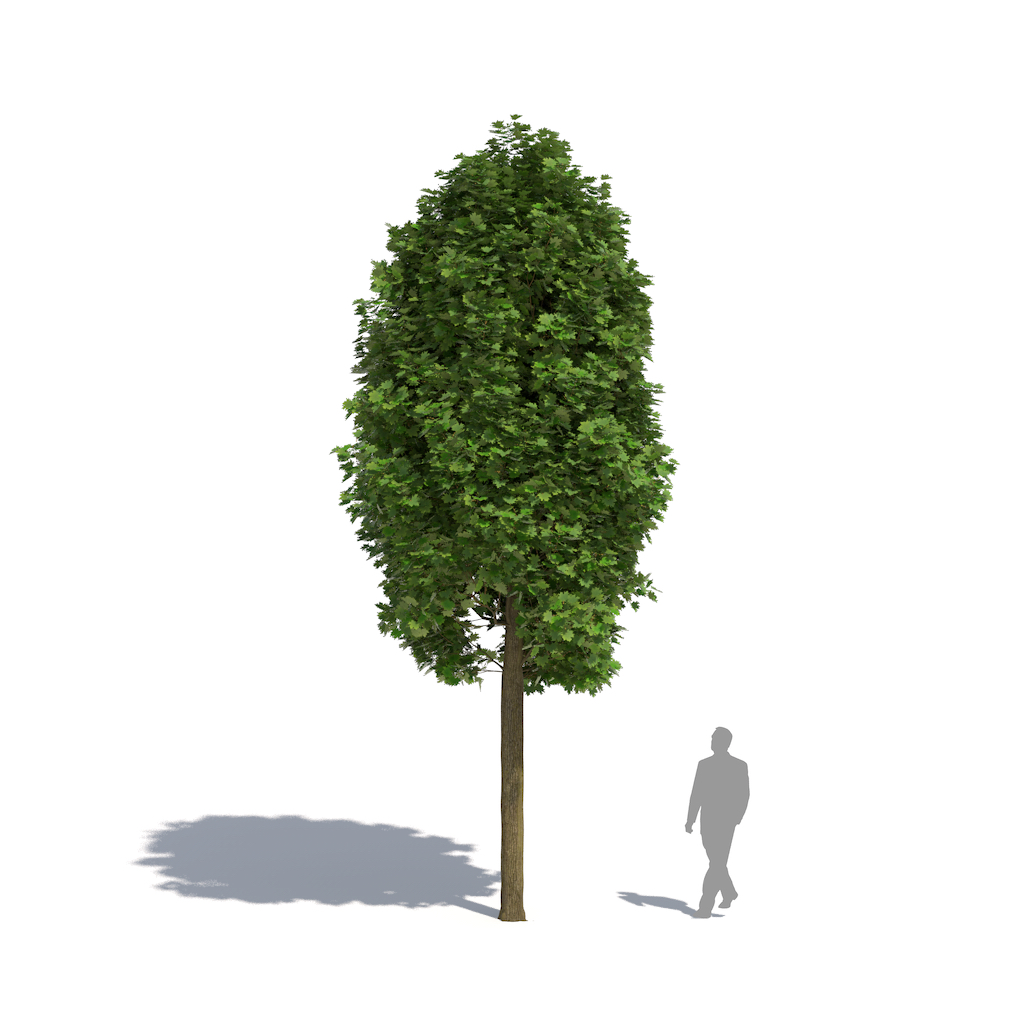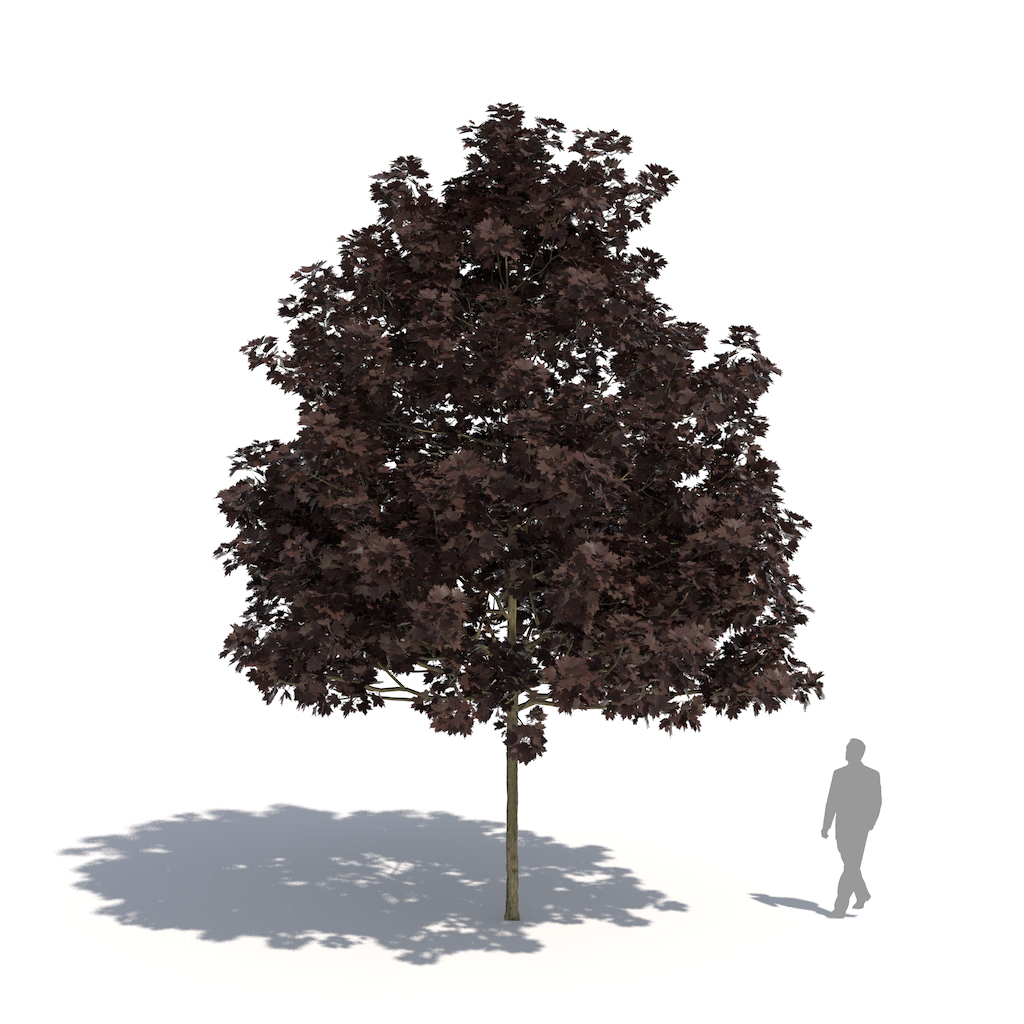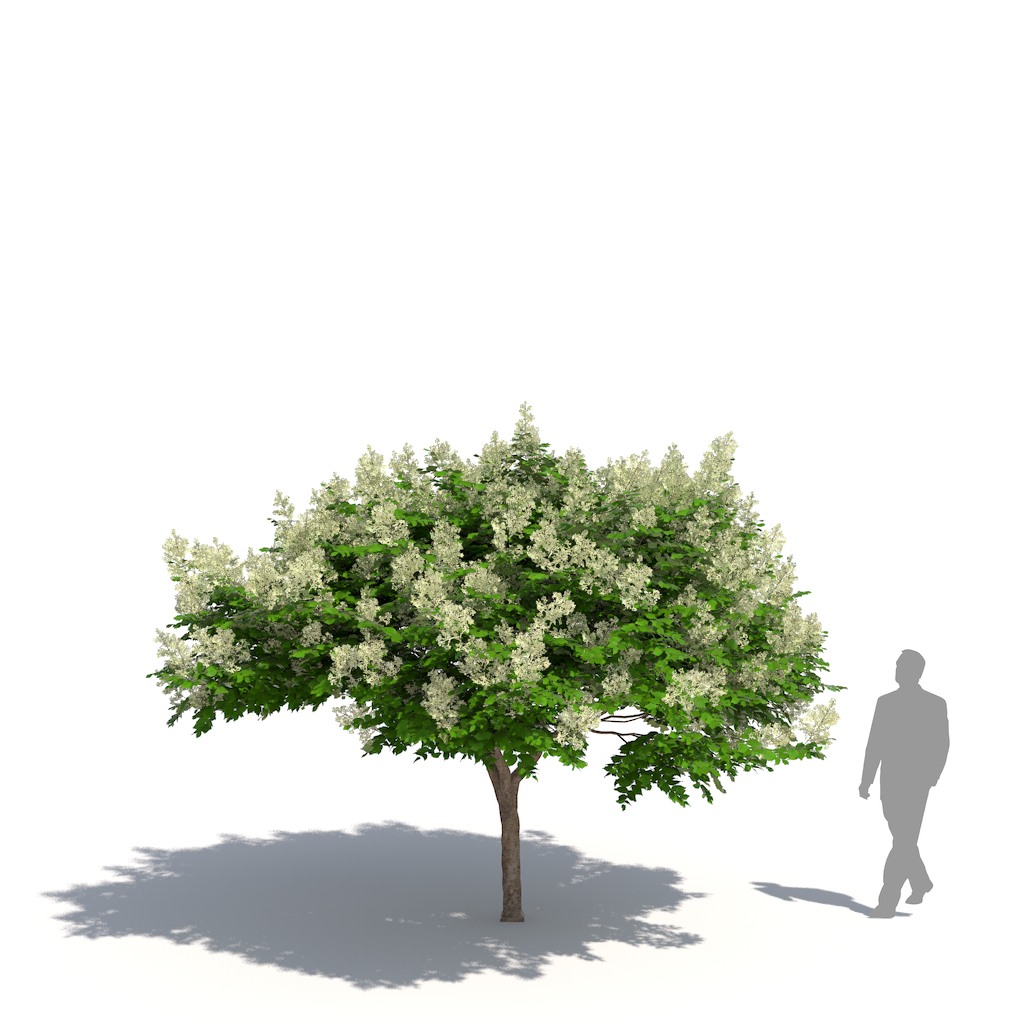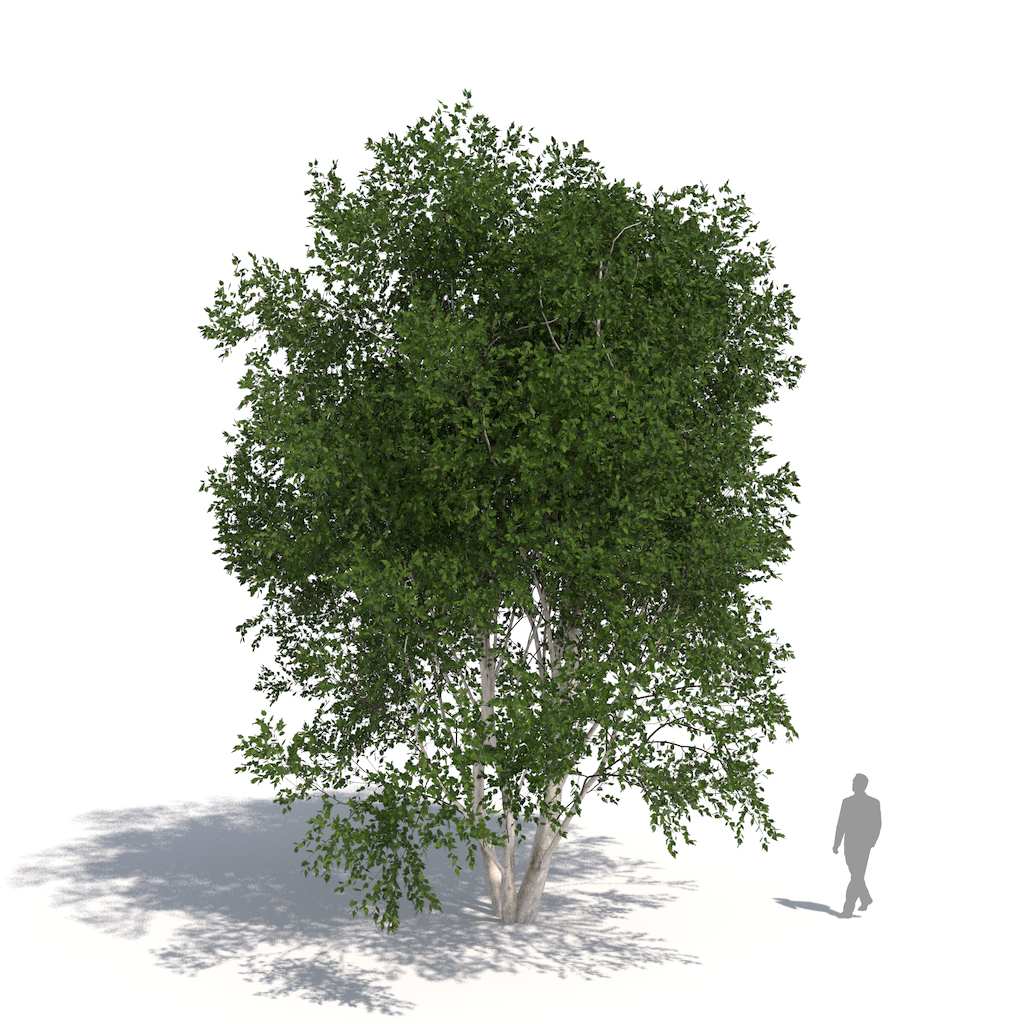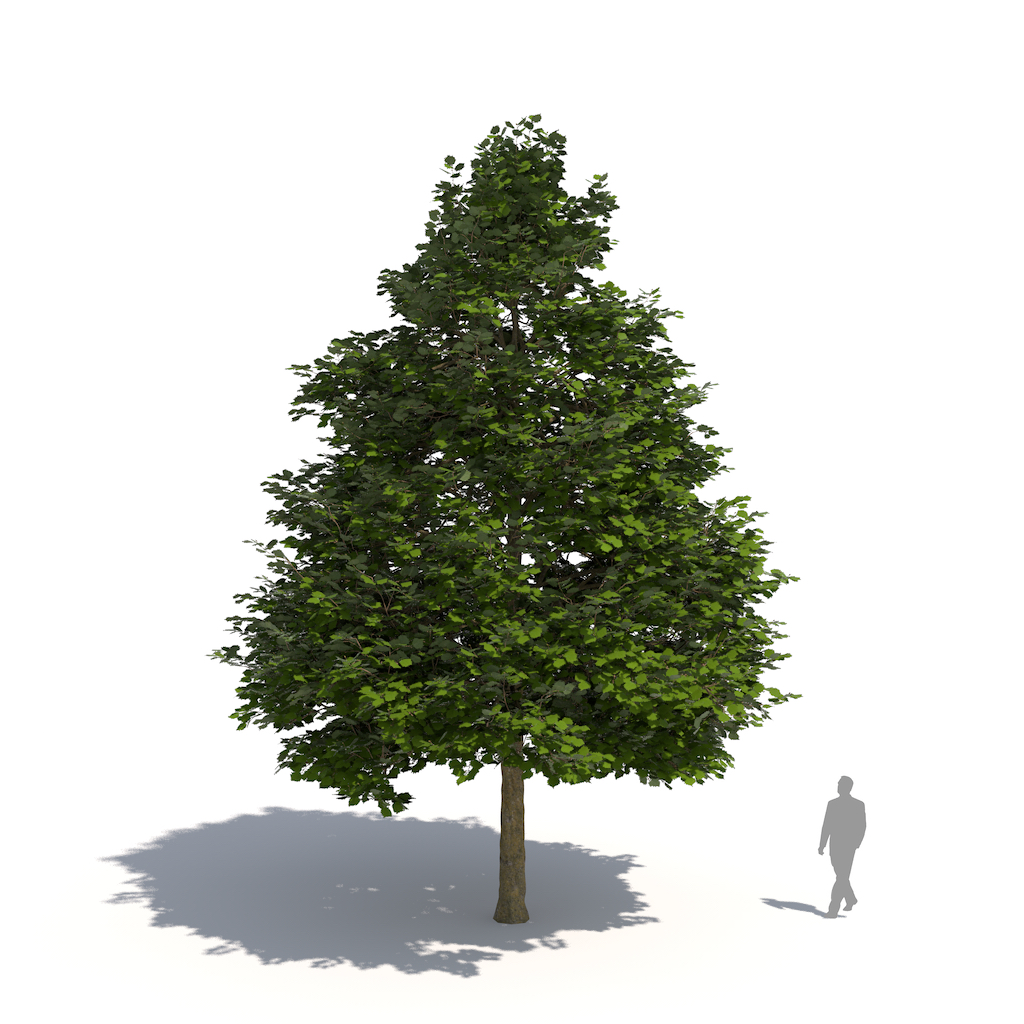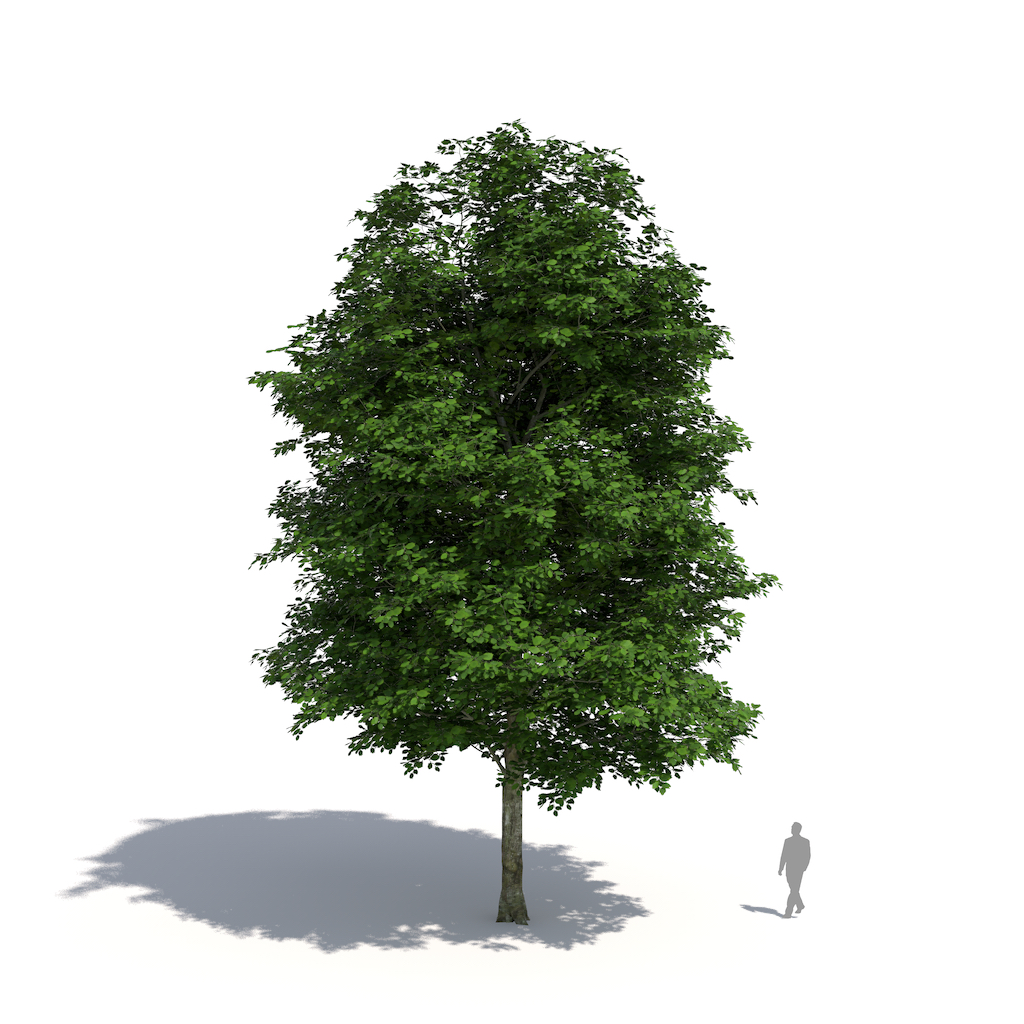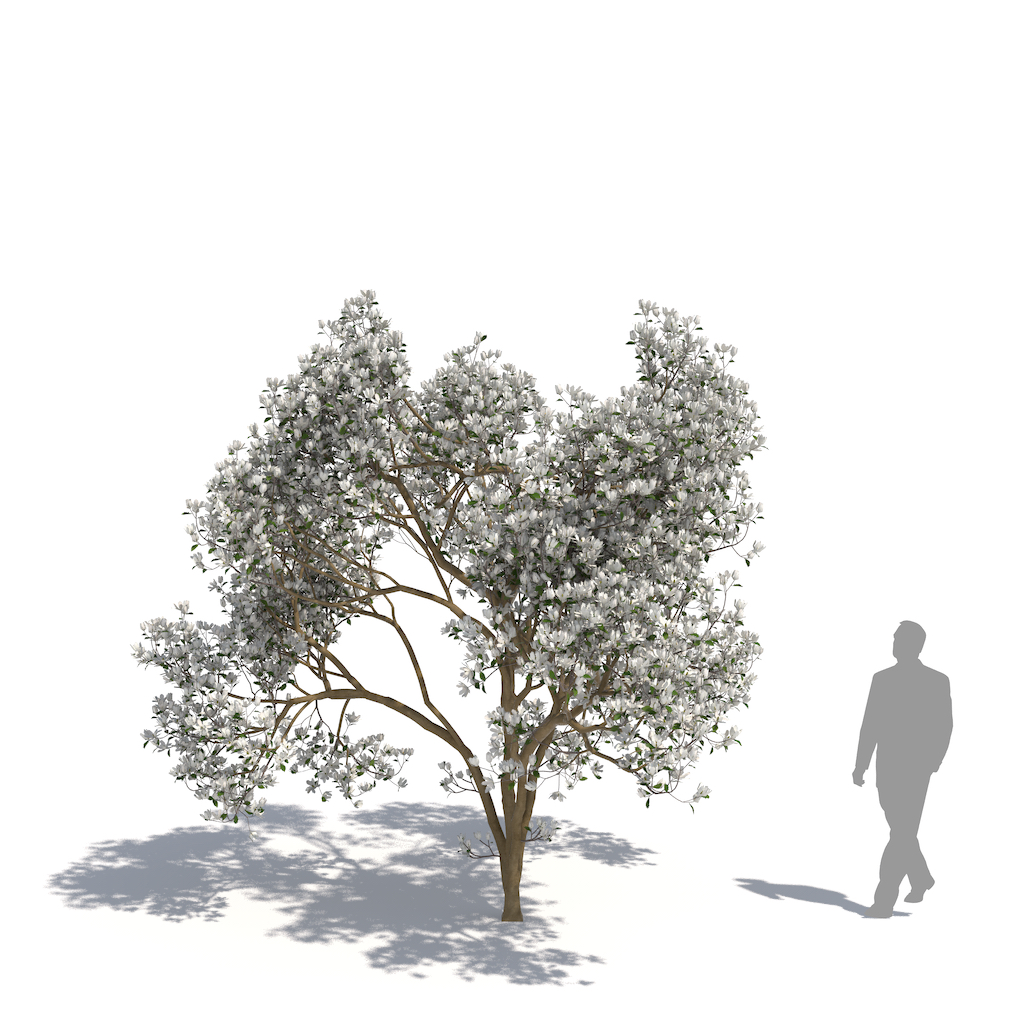Description
The Lake in Fall (artwork by Thomas Vournazos, Slashcube, using Cinema 4D, Corona Renderer, Laubwerk Plants, including Kit 13).
LAUBWERK PLANTS KIT 13 – TEMPERATE DECIDUOUS TREES
The following 10 tree species are included in the Plants Kit 13. Each species comes in 36 variations per species, i.e. 3 variants, 3 ages and 4 seasonal aspects, for a total of 360 models per Kit.
COLUMNAR NORWAY MAPLE
Acer platanoides ‘Columnare’
Medium-sized deciduous tree with a dense crown. Egg-shaped at first, becoming columnar as it matures. Clear stem, with dark-grey bark and light-brown branches. Five to seven lobes, large green leaves, turning golden yellow in autumn. Yellow-green flowers appear before the leaf unfurls. Profuse inflorescence. Fruits are winged nutlets (samara). This old French cultivar is selected for its narrow upright growth, making it suitable for narrow streets and avenues. The flowers are frequently visited by bees.
FAASSEN’S BLACK NORWAY MAPLE
Acer platanoides ‘Faassen’s Black’
Medium-sized deciduous tree with a wide, dense, irregular conical crown. Clear stem, with dark-grey bark and light-brown branches. The unfurling leaf is light red. Leaves turn deep reddish-brown in summer, then dark red in autumn. Greenish-yellow flowers appear just before the leaf unfurls, making the tree a beautiful herald of spring. The unfolding red leaf contrasts boldly with the yellow flowers.
JAPANESE ANGELICA TREE
Aralia elata
Large deciduous shrub or small tree with a light, open, vase-shaped crown. Pithy, usually unbranched stems, with grey bark. Huge, showy, bipinnate, medium- to dark-green leaves at the tips of the stems. Leaves turn pale yellow to reddish-purple in autumn. Tiny, cream-colored flowers in large billowy panicles appear in late summer. Flowers are quite showy, and very attractive to bees. Clusters of fleshy, spherical, black drupes, which ripen from late summer into autumn.
PAPER BIRCH
Betula papyrifera
Medium-sized deciduous tree with a loose crown and slightly pendent branches. Single-trunk trees usually have a rounded oval crown, while multi-trunked trees have a more irregular crown. Showy, white bark that exfoliates in papery strips to reveal an orange-brown inner bark. Ovate, irregularly toothed, dull green leaves, turning yellow in autumn. Yellowish-brown male flowers in drooping catkins, and greenish female flowers in smaller, upright catkins, followed by drooping cone-like fruits. Frequently planted as an ornamental due to its graceful form and attractive bark.
TURKISH HAZEL
Corylus colurna
Medium-sized deciduous tree of symmetrical, conical habit. Straight, upright, gray trunk that gets a ridged, corky bark at an early stage, which flakes in small plates. Broadly-ovate, dark-green leaves, woolly haired, with double serrated margins. In autumn, leaves turn variable but usually unexceptional shades of yellow. Edible nuts appear in clusters of three to six with spiny, hairy involucre husks. Yellow male catkins hang down gracefully, with inconspicuous reddish female flowers appearing before the leaves.
EUROPEAN BEECH
Fagus sylvatica
Large, vigorous deciduous tree with a dense, upright-oval to broad rounded-spreading crown. Distinctive bark is thin, smooth, and gray. Leaves broadly elliptic, yellow-green in spring, lustrous dark-green in summer, and rich golden-brown in autumn, often remaining on the tree until spring. Small, inconspicuous catkins. Edible beechnuts ripen in fall. Very popular ornamental tree in parks and large gardens, in temperate regions of the world.
‘MERRILL’ MAGNOLIA
Magnolia x loebneri ‘Merrill’
Shrub or small tree, often multi-stemmed, with an initially straight upright habit, then developing a vase-shaped, spreading, half-open crown. Smooth, greenish-gray bark. Narrow, obovate, medium-green leaves. Large, white, fragrant flowers, star-like, blushed with pink, with 10-15 petals, appear in early spring before the foliage. Cone-like fruits, ripening to red in late summer. Highly recommended cultivar with exceptionally abundant large flowers. An excellent specimen tree for the lawn or shrub border. It has gained the Royal Horticultural Society’s Award of Garden Merit.
SHOWY CRAB APPLE
Malus floribunda
Small deciduous tree with a dense, round-to-umbel-shaped, half-open crown. Gray-brown trunk, with smooth bark peeling in thin plates from the mature trunk. Slender, ovate, serrate, dark-green leaves. Crimson buds open to profuse pale pink flowers, which mature to white. Profuse masses of small, yellowish fruits with a red blush, which are quite attractive to birds. Vigorous tree with one of the best mid-spring flowering displays of any of the crabapples. Used in large gardens, parks, and public gardens.
BLACK LOCUST
Robinia pseudoacacia
Medium-sized, fast-growing deciduous tree with an irregular, transparent, half-open, oval-to-rounded crown. Grayish, rough, deeply furrowed bark. Young twigs are olive-green to brown. Dark bluish-green leaves made of oval leaflets, turning yellow in autumn. Dense, drooping clusters of aromatic white flowers, borne in late spring and summer. Linear to oblong pods mature in autumn. The tree is a major honey plant in the Eastern US, and has also been planted in European countries. Often planted along streets and in parks.
WHITE WILLOW
Salix alba
Medium-sized, fast-growing deciduous tree with an irregular, half-open, oval-to-ovoid crown. Yellowish grey-brown bark, deeply fissured in older trees. Young twigs are yellowish-brown and very pliable. Long, narrow, pointed leaves, dull green above and blue-green underneath, with a silky texture that causes them to appear silvery-white at a distance. Fall color is usually a pale yellow, but sometimes appears as a more saturated yellow. Catkins appear with the leaves in spring.
INCLUDES 360 MODELS
All Laubwerk Plants in this Kit come in 36 variations per species, i.e. 3 variants, 3 ages and 4 seasons. Here are a few examples of the variety:
Summer: 10 out of 360 temperate deciduous tree models of Laubwerk Plants Kit 13.
Autumn: 10 out of 360 temperate deciduous tree models of Laubwerk Plants Kit 13.





